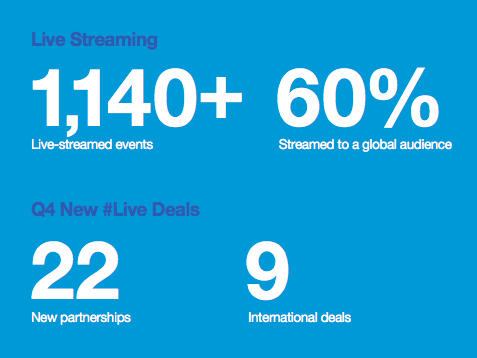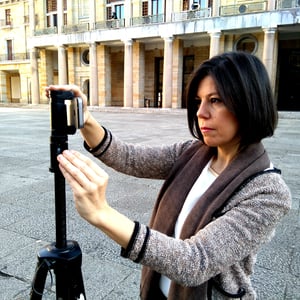What's the difference between Twitter Live and Periscope? I see the camera button beneath the cursor when I open a window to tweet. And the latter, which Twitter acquired in 2015, is installed on my iPhone – still waiting to be loved. But shouldn't they be doing the same job, allowing smartphone owners to live stream any time anywhere and get instant feedback?
I have another important question. Is anyone regularly using these tools beyond early adopter types, X Factor hopefuls and wannabe celebrities? Who are the must-follow live streamers? How is the company working to nurture its broadcaster community, one that has been largely underserved as this Mashable article explains? And what about Facebook Live, Instagram Live and YouTube Live? Everyone is going live. Where does Twitter fit in?
Only one place to go for answers and that’s London HQ, of course. There, among a small industry crowd, I was given a short presentation about the different ways that people are harnessing the service, from popular individuals like Emmy Award-winning storm chaser Jeff Piotrowski to power publishers like Buzzfeed.
Our host also gave us a glimpse into the future. One key update was that Twitter plans to combine Twitter Live and Periscope to create the go-to live broadcast platform, one that can be accessed and navigated in as fewer clicks as possible like Snapchat. A sensible move for a company that wants to be what’s ‘now’ (or rather “what’s happening in the world and what people are talking about right now”).
Although it’s important to appeal to the general public, both in terms of deepening the pool of available streams and clocking up viewers to woo advertisers, it is clear that brands are also key targets for Twitter. This is a business, after all. Hence the recent launch of Twitter Studio for publishers. Jo Kelly, Twitter’s Head of News EMEA, said that, “The priority is working with news organisations to monetise their content, taking clips from their live streams to market.” This could be in the form of breaking news (Bloomberg is a partner), pre-planned events ( eg Live Nation concerts and Wimbledon) or special programming (Gatorade's #TheBuzz and PopBuzz).
According to their Q4 2017 shareholder letter, Twitter live-streamed more than 1,140 events (up from 830 in Q3) and made 22 new partnerships (nine of which were international). It will be interesting to see how the interests of consumers and brands each impact product development.






